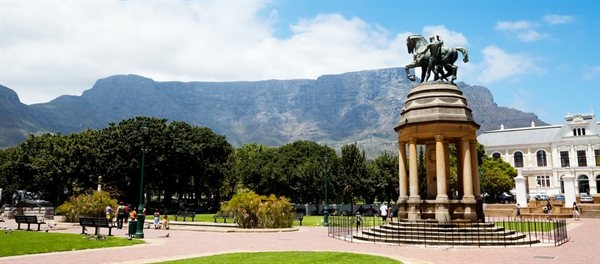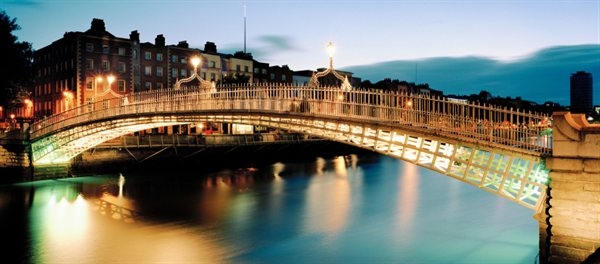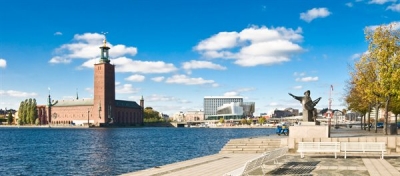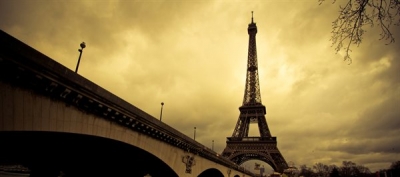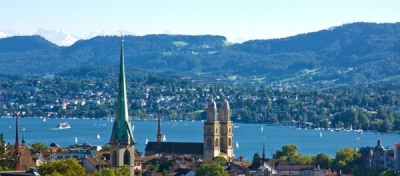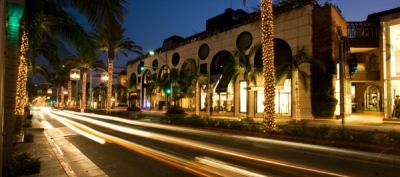
Destinations (63)
Cape Town is the legislative capital of South Africa and the oldest city in the country, founded in 1652 on the shores of the Cape of Good Hope as a supply point for the ships of the Dutch East India Company. Historically it was also the first European settlement in Africa.
Dominated by the majestic Table Mountain, from whose flat top you can enjoy a splendid view (you can also go by cable car), the peninsula has the most beautiful beaches of South Africa (above all, Clifton and Camps Bay) and lush vegetation.
Cape Town is an intriguing mix of Europe and Africa, but it has its own identity. In recent years there has been a great development of tourism and trade, which saw the birth of the Waterfront, the lively harbor area, completely renovated and became the hub of city life.
The most popular time for visitors is the summer, from October to March, from August to November, you can spot whales and dolphins up close.
What to visit
The Castle of Good Hope was built in 1666 and is one of the oldest European fort in Africa.
The South African Museum has reconstructions of dinosaurs and a large collection of natural history.
The area of the Victoria and Alfred Waterfront (with a new aquarium) is a tourist attraction irresistible.
The main districts of Cape Town (information from Wikipedia, under Cape Town):
Adderley: on this road, which passes through the upper part of the city from north to south, through the botanical gardens Company's Gardens, overlooking most of the museums and many historical buildings.
Central: the area of the Central develops around St. George's Mall and is full of shopping malls and offices.
Bo-Kaap: the Bo-Kaap Malay Quarter, which stretches from the slopes of Signal Hill, is characterized by a number of mosques and low houses of the early nineteenth century, painted in bright colors.
Waterfront: the dock of the Victoria & Alfred Waterfront is one of the most popular tourist destinations of the city, there is a maritime museum and the Two Oceans Aquarium, where you can admire the marine life of the Atlantic and Indian Oceans.
Observatory: Located in the south of the city, this district is the cultural heart of Cape Town, frequented by artists and students. It is close to campuses Groote Schurr, where Barnard carried out the first heart transplant in the world.
Kirstenbosch: Kirstenbosch Botanical Gardens, located on the east side of Table Mountain, is a green area of 530 hectares. In this garden are cultivated almost 10,000 species of plants.
Constantia is the most exclusive area of the city. Alternate villas (some of which are added to the museum) and vineyards.
The township: are the poor neighborhoods where they live the blacks remained at the margins of society. The townships of Cape Town is located in the area of the Cape Flats. Khayelitsha, Guguletu, Mitchell's Plain, Athlone and Atlantis are the suburbs where there are public housing and elsewhere in the Flats extend the so-called squatter camps, the slum
Dublin (Baile Átha Cliath in Irish), is the capital of the Republic of Ireland since the Middle Ages, is located on the east coast of the country and is the largest city in Ireland. It was founded by the Vikings more than a thousand years ago, on the banks of the River Liffey. Dublin has a long history and a major cultural tradition. Some examples of this heritage we find them in the monuments and architecture of the city, Trinity College, opened by Queen Elizabeth I in 1592, many such examples of Georgian architecture, such as the famous doors of Dublin. In addition, this is the city of important writers such as James Joyce (his famous novel "People of Dublin"), George Bernard Shaw and Oscar Wilde, as well as Guinness. Dublin is the perfect destination for English classes for a vacation in the "capital of the pub", where they were born famous bands like U2.
Dublin is the capital of Ireland. Cosmopolitan city, home to more than a third of the people in Ireland, but it remains a city on a human scale and young, with 50% of the population under 27 years. Dublin is also recently became the capital of information technology in Europe.
Dublin is divided in two by the River Liffey.
The area south of the River Liffey is the oldest part of the city, with the church of St. Patrick (dating back to 1190), the cathedral of the Church of Ireland. This is also the entertainment area, with the Temple Bar area, the neighborhood pub and artists, and Grafton Street shopping, and Saint Stephens Park, with its lake (one of the places where you can enjoy summer concerts). This is also where the Trinity College, the most prestigious university in Ireland, founded in 1592, the parliament, and the most important museums of the city: the National Gallery of Ireland, the National Library, the National Museum of Ireland.
To the north of the River Liffey is O'Connell Street are examples of Georgian architecture (brick red colored doors) and the Abbey Theatre in George Bernard Shaw. This is the least interesting from the point of view of art and entertainment, but more related to the recent history dela city.
The center of Dublin is all to explore on foot.
What to visit
Just outside the town is Phoenix Park, with its 700 hectares is one of the largest urban parks in the world. The park is the privileged place for picnics, contains a zoo and the home of the president.
In Dublin there is also the establishment of Guinness: Guinness Storehouse is one of the attractions "top" of Dublin (and a pint of beer is included in the ticket price).
Trinity College is the university's most prestigious island, founded in 1592. E 'famous for the Old Library, which houses a large collection of manuscripts. The most important of these is the Book of Kells, an illuminated Gospel of the ninth century. The Book of Kells and other treasures are on display in the Long Room. To see the Book of Kells you pay for, but to visit Trinity College and his courts do not pay anything.
Irish Museum of Modern Art: Free admission.
Stockholm is a city literally floating on water: to realize just climb the tower of television Kaknäs and observe the deep blue sea which stand out against the red silhouettes of the old buildings and the green of the trees.
A separate fresh water from the salt water are the island of Gamla Stan (the old town, perfect reproduction of a medieval village) and at the southern end, large closed the Slussen.
Today the city covers thirteen islands connected by bridges and tunnels, between Lake Mälaren and the Saltsjön (cove that opens onto the Baltic Sea), and has 700 000 inhabitants.
The skyline is dominated by the Stockholm Stadshuset (City Hall), a red-brick building from whose central body stands a massive square tower which seems to watch the bridges and islands of this quiet and airy, the undeniable charm.
What to visit
The Gamla Stan (the old town), Tyska Kyrkan, the Stortorget, the Stadhuset, the Great Cathedral (the Cathedral).
The Bollhustäppan (Garden of the Court of Dance), the Palace or the Royal Castle (with inside the Crown Jewels, the Hall of Writing Oscar II, the 'Royal Armoury), the island of Riddarholmen, the Riddarhuset (House of Nobili), the Riksdag (parliament).
The Medieval Museum, the Museum, the Katerinahissen, the island of Djurgården, the Museum of Modern Art, the National Museum, Skansen, the National Maritime Museum, the Tunnelbanen, the Sergelstorget, the Blà Tornet (where the Blue Tower Strindberg lived).
Paris is a city that invites you to dream. Founded around 250 BC on a small island on the River Seine, the Gallic Parisii, is one of the most romantic destinations in the world. Paris charms visitors with its monumental buildings and symbols, such as the Eiffel Tower or the Opera House, but also with its bohemian atmosphere and avant-garde, you breathe from Montmartre to the corner most unexpected. Paris invites you to discover little by little, getting lost in its streets. Cradle of artistic and cultural movements, Paris was the city of artists and intellectuals such as Jean-Paul Sartre, Rene Descartes, Monet, Renoir and Dumas.
To really appreciate the spirit of this city, you will need to escape from the usual tourist routes. Relax at the table of a small cafe, savor a glass of wine and watch the comings and goings of the street. Paris, romantic ... and beyond.
In Paris, the problem is where to start.Places the icons, the Eiffel Tower, the bridges of the Seine, the Arc de Triomphe?
Museums, the Louvre, the Picasso museum, the Musée d'Orsay or the Beaubourg?
Districts, the Marais, the Latin Quarter, Montmartre, Belleville? From the new Paris la Defense or La Villette?
The suggestions are useless: each construct the following visit their emotions.
Lovers of literature can sit at a table in the Café Les Deux Magots, imagining to see Sartre in the next, and wander through the narrow streets of St-Germain-des-Prés.
Those who love art in all its forms has a hundred museums available.
The romantics can stroll in the moonlight along the banks of the Seine, the "vicious" to hunt for sins to Pigalle, the "trendy" hang the trendiest neighborhoods (at this time, the ethnic mix of Belleville).
And of course, all the tourists who are not ashamed of it can climb the Eiffel Tower, Notre-Dame to join, make a stop on the steps of Sacre Coeur and the Place des Vosges on the benches.
Last stop, the top of the Tour Montparnasse, to see the sun set and deliver to Paris on his heart.
What to visit
- The museums (Louvre, the Picasso Museum, the Palais de Chailot, the Centre Pompidou, the Musée d'Orsay: these are, um ... "mandatory").
- Monuments (see above); neighborhoods (ditto).
- The shops and department stores.
- Parks (the Luxembourg, the Tuileries Gardens, the parc Montsouris, that of the Palais de Chailot).
Zurich is the largest city in Switzerland and capital of the canton of Zurich.
E 'divided in two by the River Limmat Niederdorf on the east shore, full of shops and cafes, is also home to the university and the twin towers of the Grossmunster, which in the sixteenth century Ulrich Zwingli Zurich made the center of the Protestant Reformation.
On the other hand, on the west bank, the old part of the city, which revolves around the Lindenhof area, home to fashion shops and offices. In the area there are also beautiful spiers of St. Peters Church and the church Fraumunster by Marc Chagall.
The megalopolis of California (the third in the United States by number of inhabitants, after New York and Chicago) extends over an area of 1187 square kilometers and encompasses 80 small towns, including Beverly Hills, Culver City, Hollywood, Santa Monica, Venice and Inglewood). All are connected by highways and freeways (freeways and highwys) up to ten lanes, a maze of junctions, fittings and elevations. In reality, there is (or could be) a real center.
Stockholm, Sweden's capital and largest city of the country, is located on the west coast of Lake Mälaren, near the Baltic Sea. The city is particularly famous for being made up of an archipelago of 14 islands connected by 53 bridges. The old town, Gamla Stan is, built on an island completely pedestrianized, has a lively cultural life and an exciting nightlife. Stockholm, which now has 783,000 inhabitants, began its history as a small Viking village in the eleventh and seventeenth centuries.
Today it is a modern city, home to the delivery of the prestigious Nobel prizes and is one of the cleanest cities in Europe. Lose yourself in its archipelago of 24,000 islands in the summer, or in love with his charming winter light: any time is good to visit Stockholm.
